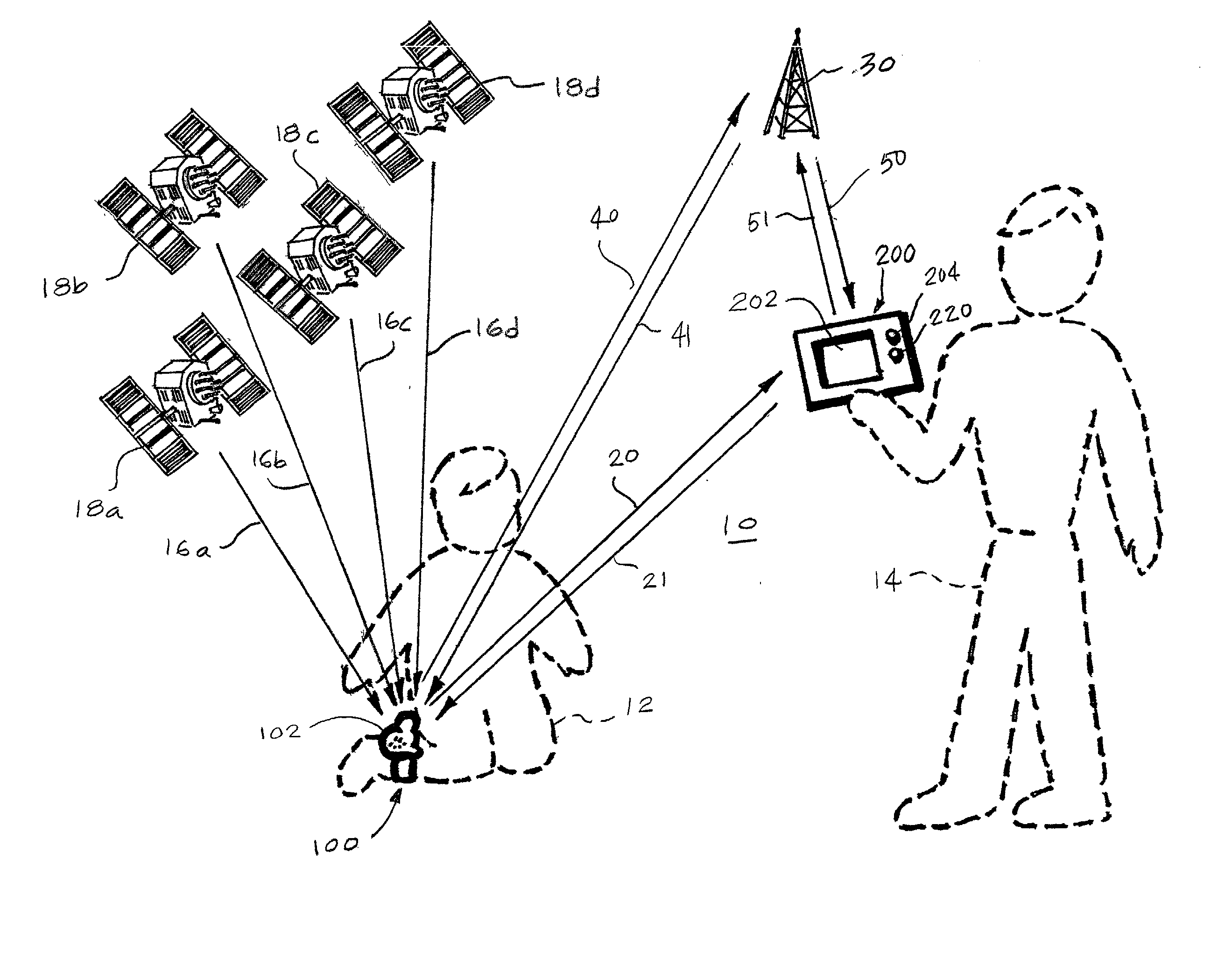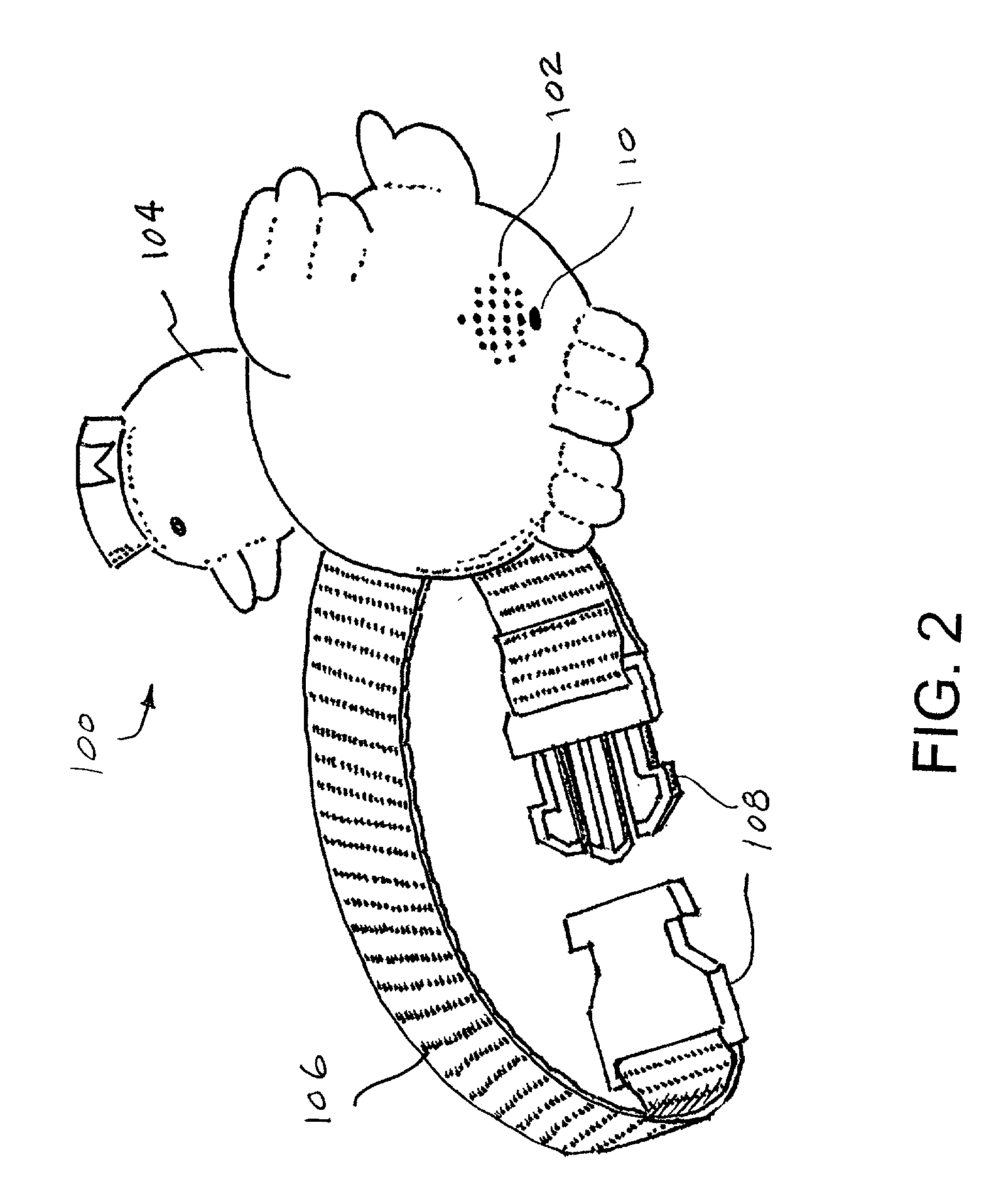Method and apparatus for locating missing persons
a missing person and method technology, applied in the field of personal monitoring and locating systems, can solve the problems of introducing additional complexity and weight, the receiver does not provide the location coordinates of the child or patient to the parent or guardian, and the process of locating the source of the alarm may be particularly difficul
- Summary
- Abstract
- Description
- Claims
- Application Information
AI Technical Summary
Problems solved by technology
Method used
Image
Examples
Embodiment Construction
[0030] The system in accordance with the invention is illustrated in FIG. 1, and generally denoted by reference number 10. A portable, mobile transmitter 100 is removably secured to the subject 12 being monitored, for example, a young child. A portable monitoring unit 200 is carried by or otherwise maintained in the vicinity of a user 14, such as a parent or a guardian, who is monitoring the location of the subject 12. In the exemplary embodiment, GPS technology is used, which includes a constellation of at least 24 satellites, also referred to as space vehicles (SV's), that are distributed over the earth such that at least four SV's are visible at any location on the earth's surface. As illustrated in FIG. 1, the SV's 18a, 18b, 18c, 18d transmit microwave ranging signals 16a, 16b, 16c, 16d, which are received by the mobile transmitter 100. The ranging signals 16a, 16b, 16c, 16d include an L-band signal modulated with a Pseudorandom Noise (PRN) Code known as the "C / A code sequence."...
PUM
 Login to View More
Login to View More Abstract
Description
Claims
Application Information
 Login to View More
Login to View More - R&D
- Intellectual Property
- Life Sciences
- Materials
- Tech Scout
- Unparalleled Data Quality
- Higher Quality Content
- 60% Fewer Hallucinations
Browse by: Latest US Patents, China's latest patents, Technical Efficacy Thesaurus, Application Domain, Technology Topic, Popular Technical Reports.
© 2025 PatSnap. All rights reserved.Legal|Privacy policy|Modern Slavery Act Transparency Statement|Sitemap|About US| Contact US: help@patsnap.com



